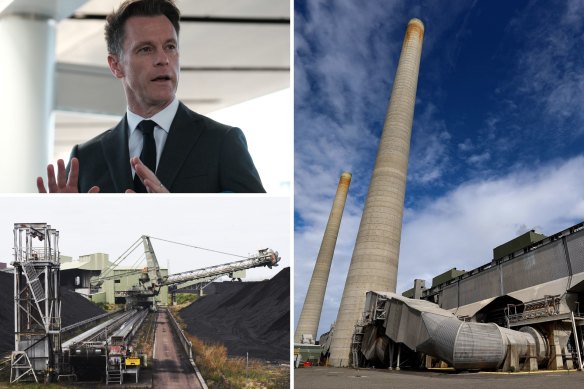
Premier Chris Minns made a stunning admission when announcing he would save Eraring, Australia’s largest coal-fired power station, by extending its operating life until August 2027.
“The best way to undermine the renewable energy transition is to have the lights go out in 2025,” he said on Thursday. “I’m not letting that happen.”

The Minns government says taxpayers are protected by its Eraring deal.
Frankly, we had not realised such a doomsday scenario was so close. With Eraring slated to close next year, seven years sooner than expected, due to the supposed impact of renewable energy on its bottom line, governments have lulled the people of NSW into a false sense of security about renewable’s vaunted ability to keep the lights on.
The government will not make any initial payments to the privately owned power plant on the shores of Lake Macquarie, but Origin Energy will instead decide by March 31, 2025, and 2026 whether it opts in to a risk-sharing arrangement for the following financial year. Should Origin opt in to an underwriting agreement, taxpayers would share up to $40 million a year of any profits Eraring makes. However, if Origin makes a loss, the government would support the company for a share of those losses, that could end up costing $450 million over the two years. The deal has been structured cleverly so that the government avoids paying huge sums up front in the event of a downturn.
Under the two-year reprieve, Eraring must generate enough power to resolve the forecast reliability gap and maintain the power station’s current 220 workforce and adhere to licence conditions, which include environmental protections.
Loading
Eraring was sold to Origin by the Coalition after the previous Labor government privatised NSW’s power assets, and the prospect of using taxpayers’ money to extend the power station’s life now comes with a potentially large political cost. The arrangement puts the NSW government on course for a clash with renewable energy advocates and climate campaigners. However, as governments scramble to meet renewable and climate targets, the unpalatable fact is that renewable energy has comprehensively failed to deliver on the promises.
Eraring is the nation’s largest coal-fired power station, but with at least half of the remaining 14 coal generators on the eastern seaboard due to close within the next decade, governments are becoming increasingly nervous that not enough new renewable energy generators, storage projects and transmission lines are being built to keep power supplies and prices stable. The Victorian government has already intervened to ensure two of its biggest coal generators do not shut prematurely.
Ironically, investment in renewables has lagged in part because the explosion of household rooftop solar offering near-free daytime power has created a shortage of good renewable energy projects to attract investment. And large-scale investments also have been delayed by supply side disruptions, labour shortages, rising costs and community opposition, including on big transmission lines to distant solar farms and offshore wind.









 Add Category
Add Category